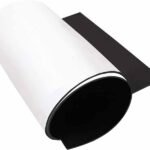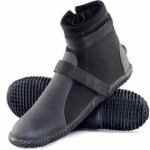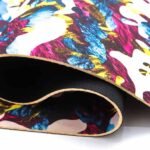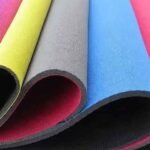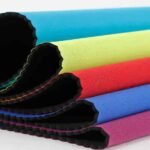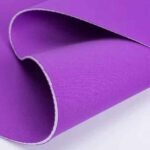Choosing the right socks can make all the difference in comfort and performance, especially when you’re outdoors or in extreme conditions. Neoprene socks and wool socks are two popular options, each with unique benefits. But which one suits your needs best? Let’s explore their features, insulation, waterproofing, and more to help you make an informed choice.
Neoprene socks are highly waterproof and provide excellent insulation in wet conditions, while wool socks excel at moisture-wicking and natural warmth in various environments. Your decision depends on the activity, weather, and personal preferences.
Here’s a comprehensive comparison to guide your decision-making process.
What are neoprene socks?
Neoprene socks are made from synthetic rubber known as neoprene. This material is highly elastic, water-resistant, and durable, making it ideal for outdoor activities.
Neoprene socks are designed to keep your feet warm and dry in wet conditions. They are commonly used in water sports, hiking, and fishing, where protection from water and cold is essential.
Features of Neoprene Socks
| Feature | Benefit |
|---|---|
| Waterproof | Keeps feet dry in wet conditions |
| Insulating | Retains heat in cold environments |
| Elastic | Provides a snug fit |
| Durable | Resistant to wear and tear |
These qualities make neoprene socks a top choice for activities involving water or extreme weather.
What are wool socks?
Wool socks are made from natural wool fibers, often from sheep. They are prized for their softness, breathability, and ability to regulate temperature.
Wool socks are highly versatile, keeping your feet warm in cold weather and cool in warmer conditions. They are ideal for hiking, casual wear, and outdoor adventures.
Features of Wool Socks
| Feature | Benefit |
|---|---|
| Moisture-wicking | Keeps feet dry and prevents blisters |
| Insulating | Provides warmth even when wet |
| Breathable | Prevents overheating |
| Odor-resistant | Naturally resists odors |
Wool socks are a great option for activities requiring comfort and temperature regulation.
Are neoprene socks good?
Neoprene socks are excellent for specific use cases, especially when waterproofing and insulation are priorities. They are ideal for water sports, fishing, and cold-weather activities.
Neoprene socks are good because they are waterproof, durable, and provide excellent insulation. However, they may lack the breathability of wool socks, making them less ideal for everyday wear.
Pros and Cons of Neoprene Socks
| Pros | Cons |
|---|---|
| Waterproof | Less breathable |
| Durable | Can feel bulky |
| Insulating | Limited moisture-wicking |
For activities involving water or prolonged exposure to cold, neoprene socks are a reliable choice.
Is neoprene warmer than wool?
The warmth of neoprene versus wool depends on the conditions. Neoprene excels in wet, cold environments, while wool performs better in dry or moderately damp conditions.
Warmth Comparison: Neoprene vs Wool
| Condition | Neoprene Socks | Wool Socks |
|---|---|---|
| Dry and cold | Moderate insulation | Excellent insulation |
| Wet and cold | Retains heat effectively | Loses some warmth when soaked |
| Humid and warm | Can feel clammy | Regulates temperature well |
Factors Affecting Warmth
- Water Exposure: Neoprene’s waterproof design makes it better for wet conditions, while wool provides warmth even when damp but is less effective when fully soaked.
- Layering: Neoprene’s snug fit traps heat, while wool’s fibers allow for layering and breathability.
- Activity Level: High-intensity activities might favor wool for its breathability, while low-activity settings benefit from neoprene’s insulation.
Understanding these factors can help you decide which sock is better for your needs.
Which is more waterproof, neoprene socks or wool socks?
Neoprene socks are significantly more waterproof than wool socks. The synthetic material provides a watertight barrier, whereas wool fibers can absorb moisture while remaining warm.
Neoprene socks are fully waterproof, making them the best choice for activities involving prolonged water exposure. Wool socks, while not waterproof, can wick moisture and keep feet dry in light rain or damp environments.
Waterproofing Features
| Feature | Neoprene Socks | Wool Socks |
|---|---|---|
| Waterproof level | 100% waterproof | Water-resistant, not waterproof |
| Performance in water | Excellent | Adequate for light moisture |
For activities like kayaking, fishing, or wading, neoprene socks are unmatched in waterproofing.
Conclusion
Neoprene socks and wool socks each have unique strengths. Neoprene socks excel in wet conditions, offering waterproofing and insulation, while wool socks shine in dry or mildly damp environments with superior breathability and comfort.
At Szoneier, we specialize in manufacturing high-quality neoprene socks tailored to your needs. Whether you’re a brand owner, wholesaler, or retailer, our customizable neoprene socks are designed for performance and durability in all conditions.
Ready to explore our range of neoprene socks? Contact us at info@neoprene-bag.com or visit www.neoprene-bag.com to learn more and request a free sample.


